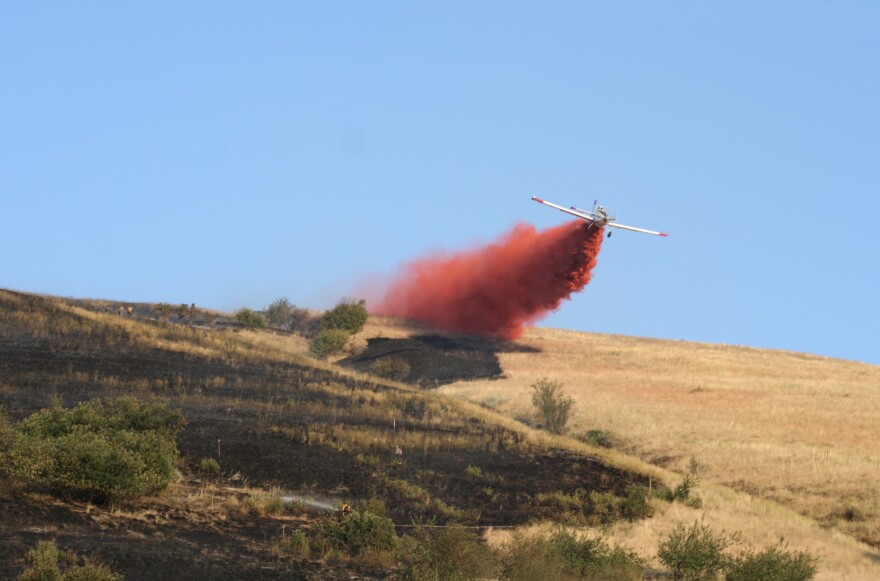Firefighting resources are stretched to capacity and there’s no end in sight to the hot and dry conditions fueling the 2021 wildfire season.
The nation’s firefighting resources are stretched to the limit. Sonya Germann, state forester with the Department of Natural Resources and Conservation, told a state water policy committee Thursday that conditions are bad and Montana isn’t getting all the resources it needs to fight the fires.
“And if you’re going to ask me what resources we’re short on, I will say ‘everything.’ There are so many fires, and entities are ordering resources that are unable to fill,” Germann says.
The National Interagency Fire Center Wednesday bumped the country’s fire preparedness to Level 5, the highest level of wildfire activity. That means large, complex wildfires will quickly drain limited firefighting resources.
According to NIFC this is the earliest move to Level 5 in a decade. The agency’s regional counterpart, the Missoula-based Northern Rockies Coordination Center made the same move last weekend.
Germann said there are significant fire starts around the state.
“Simply put, there’s not a lot of relief in sight.”
Record heat and bone-dry drought is scorching the American west where, according to NIFC, at least 71 large fires have burned 1 million acres. As of Thursday, more than 1,400 wildland fires in Montana have burned over 220 square miles.
Wyatt Frampton is a forest action plan project manager with Montana DNRC. He spoke with MTPR on the phone earlier this week. Frampton says stiff competition for those limited resources means fire managers will have to, “modify suppression tactics or look towards an increased level of sharing and cooperation with other fire [incidents] and prioritize which incidents will get which resources.”
National news reports earlier this week said jet fuel shortages could possibly ground firefighting aircraft this summer. But Montana fuel and fire aviation experts tell MTPR they’re not worried about that possibility here.
“I don’t believe it’s a concern here in Montana,” says Montana Petroleum Association Executive Director Alan Olson.
“We’ve been keeping in pretty close contact with our refinery members as well as state agencies, ensuring that we’ve got a good supply of aviation fuel for firefighting in Montana. In my discussions with the refining sector, we’re keeping up with the task.”
According to the U.S. Energy Information Administration, jet fuel supplies in the U.S. in 2020 fell 38% compared to 2019 pre-pandemic levels and hasn’t fully recovered.

Olson says Montana is relatively sheltered from the many challenges faced by the nation’s refining sector because a refinery in Billings produces jet fuels used by firefighting tankers and helicopters.
“We’re kind of an island. 98-percent of the crude oil we refine in Montana comes out of Canada. It’s pipelined down here, so we’ve got a supply of crude oil.”
One bottleneck does exist: getting that fuel from the refinery to distribution points and end-users.
“Primarily we think it’s a driver shortage across the county and here we’re noticing that as well,” says Jennifer Draughon, President of the Missoula-based Neptune Aviation, which operates a fleet of nine firefighting jet tankers.
The coronavirus pandemic that gutted the travel industry last year also sidelined many aviation support industries, including the drivers who haul aviation fuel.
Draughon would like to see an intensified recruiting effort for qualified drivers with hazmat certification.
Meanwhile, the Montana Petroleum Association’s Alan Olson says he thinks refiners will be able to keep Montana’s fire aviation aircraft in the sky this summer.
But officials say all other resources are in short supply.
Get the latest Montana wildfire, fire management and air quality news on your radio, via podcast, or in your inbox.
Explore what wildfire means for the West, our planet and our way of life, with Fireline, a six-part series from Montana Public Radio and the University Of Montana College of Business.



